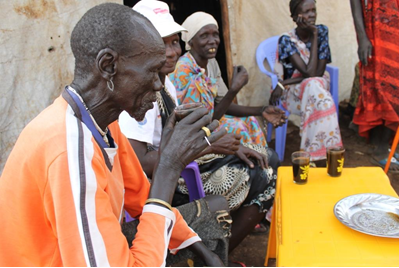As countries pass the peak of the COVID-19 pandemic, government strategies to bring us out of lockdown are an opportunity to protect the lives, dignity and well-being of everyone, everywhere.
- Age-based measures that isolate older people for long periods of time are harmful to their dignity and well-being. Many are left with no access to healthcare, care and support, pensions, work, food or other means to support themselves.
- Singling out older people stigmatises them and reinforces ageist stereotypes that all older people are weak and vulnerable. It prevents them from playing their multiple roles in society and their part alongside others in recovery from the pandemic.
- Alternatives measures should be used that minimize the risk of infection for everyone, including older people, and help build more cohesive societies.
Download the pdf version here.

Age-based measures
Older people are at particular risk from COVID-19 in terms of their health and across a range of social and economic aspects of their lives. (1) Age-based measures restricting the movement of older people have been considered or introduced in a number of countries. These include people over a certain age, e.g. 65 or 70 years old, staying at home (also referred to as ‘self-isolation’ ‘curfews’, ‘confinement’ or ‘shielding’) (2), not going to work (3), shopping malls4 or restaurants (5), not using public transport (6), and not participating in religious activities (7).
As with initial emergency responses, any measures to take us out of lockdown that restrict our rights must be based on scientific and medical evidence. They must be temporary and regularly reviewed so they are used only when strictly necessary and in accordance with the law. They should be proportionate, and not create overbearing restrictions on our rights or harm to our well-being. They should not discriminate. (8)
The impact of age-based measures
When age-based measures have a negative impact on an older person’s rights, compared to someone of a different age, they discriminate on the basis of age.
Age-based measures fail to take into account the negative impact long periods of isolation will have on older people’s physical, mental and cognitive well-being. (9) In many places, older people have already been subject to stricter isolation measures than other population groups and this has left many unable to access the medical or care and support services they need, their pensions, work or other means to support themselves. (10) They have been exposed to increased risk of violence, abuse and neglect. (11) Longer periods of isolation would exacerbate this.
Singling out one section of the population can also have a significant stigmatising (12) effect. Separating generations may worsen intergenerational-tensions and ageist attitudes (13), and prevent older people from playing their part, in solidarity with younger generations, to ‘build back better’, for example, through returning to work, volunteering or participating in community activities.
Age-based measures do not take into account older people’s diverse living arrangements. Many live with younger family members (14) and staying at home while those they live with go out does not address the risk of contracting the virus within their household.
Measures to restrict movement based on underlying health conditions (15) may also be extended. While people of all ages can have underlying health conditions, many older people have at least one. (16) Long periods of isolation also have negative impacts on people with underlying health conditions, including those needing palliative care and their families (17), and will disproportionately affect older people.
Alternative measures
Alternative measures for coming out of lockdown should be found which minimize the risk of infection for everyone and help build more cohesive societies. This should be done in consultation and with the consent of everyone in the community.
Measures may include phasing the restart of economic or social activities based on the level of physical interaction involved, e.g. limiting mass gatherings; maintaining public health measures such as hand washing, wearing masks and safe, physical distancing; wider use of testing; and providing accessible information to everyone (18) so they can assess their own risk and exercise their judgement.
For further information contact Bridget Sleap, Senior Rights Policy Adviser.
